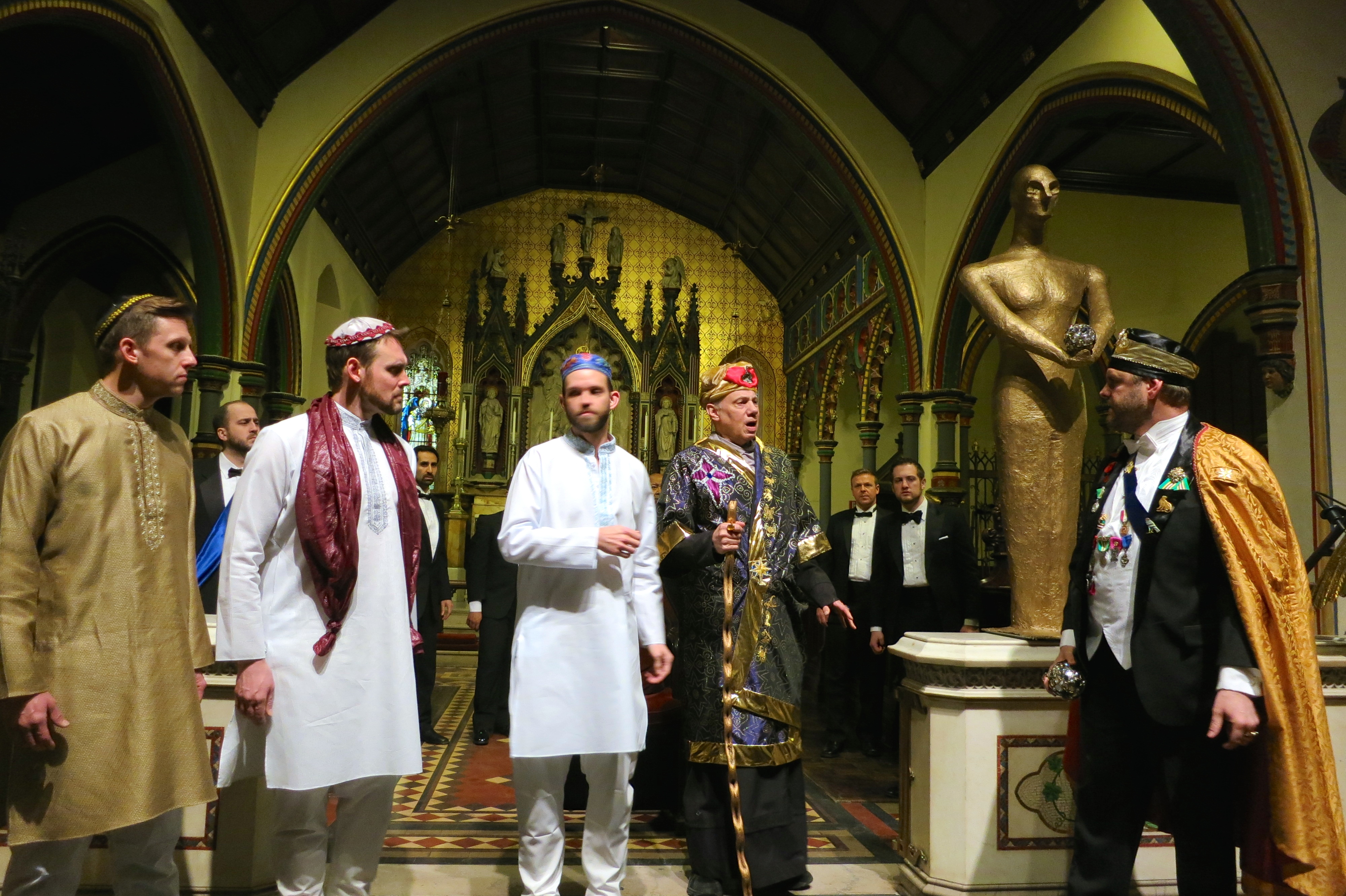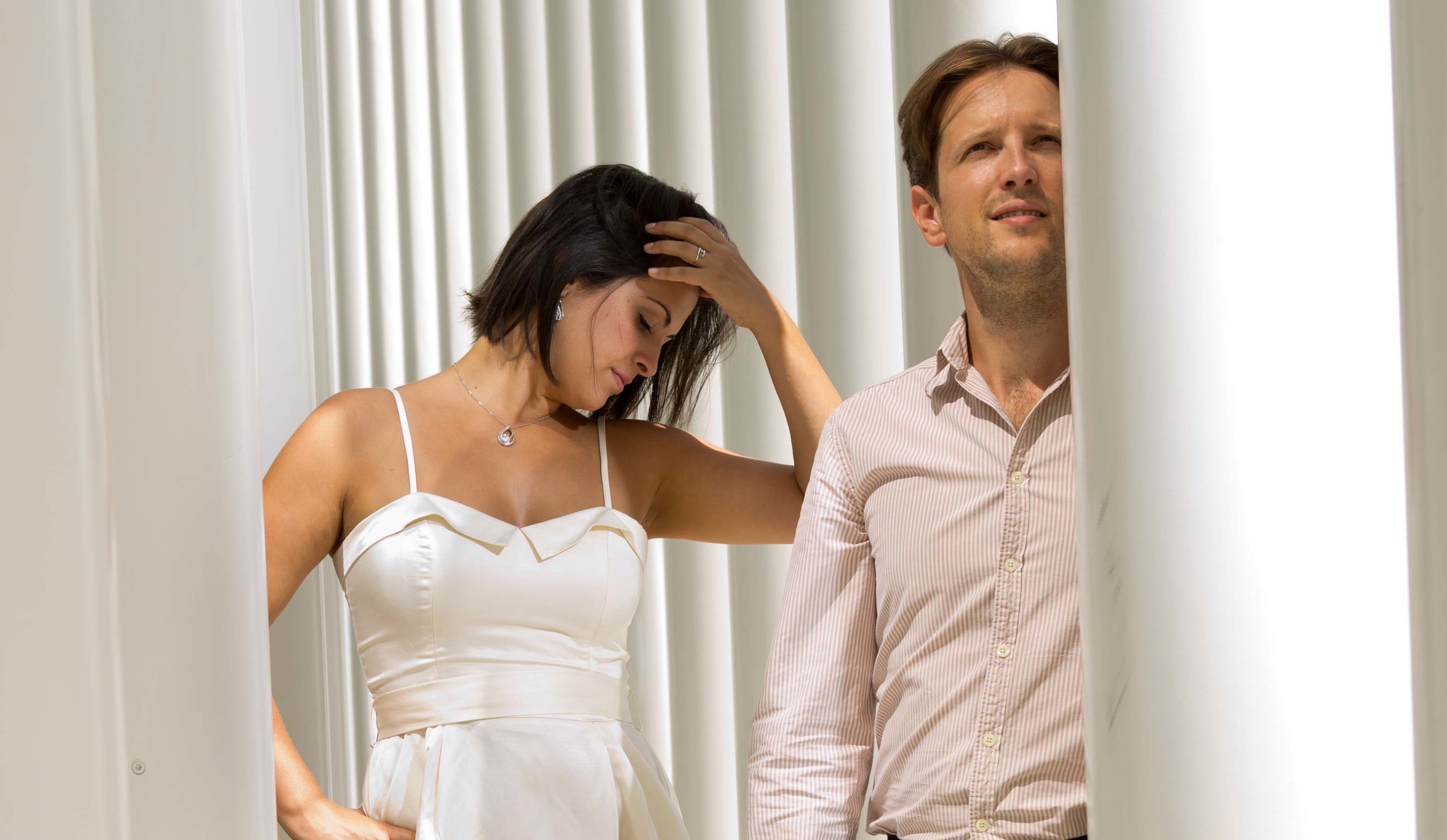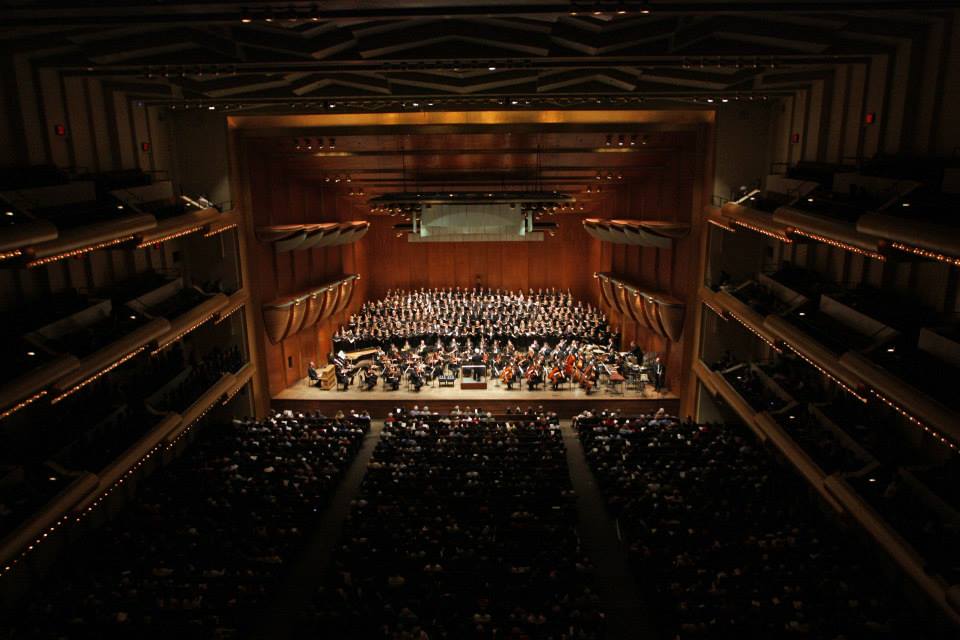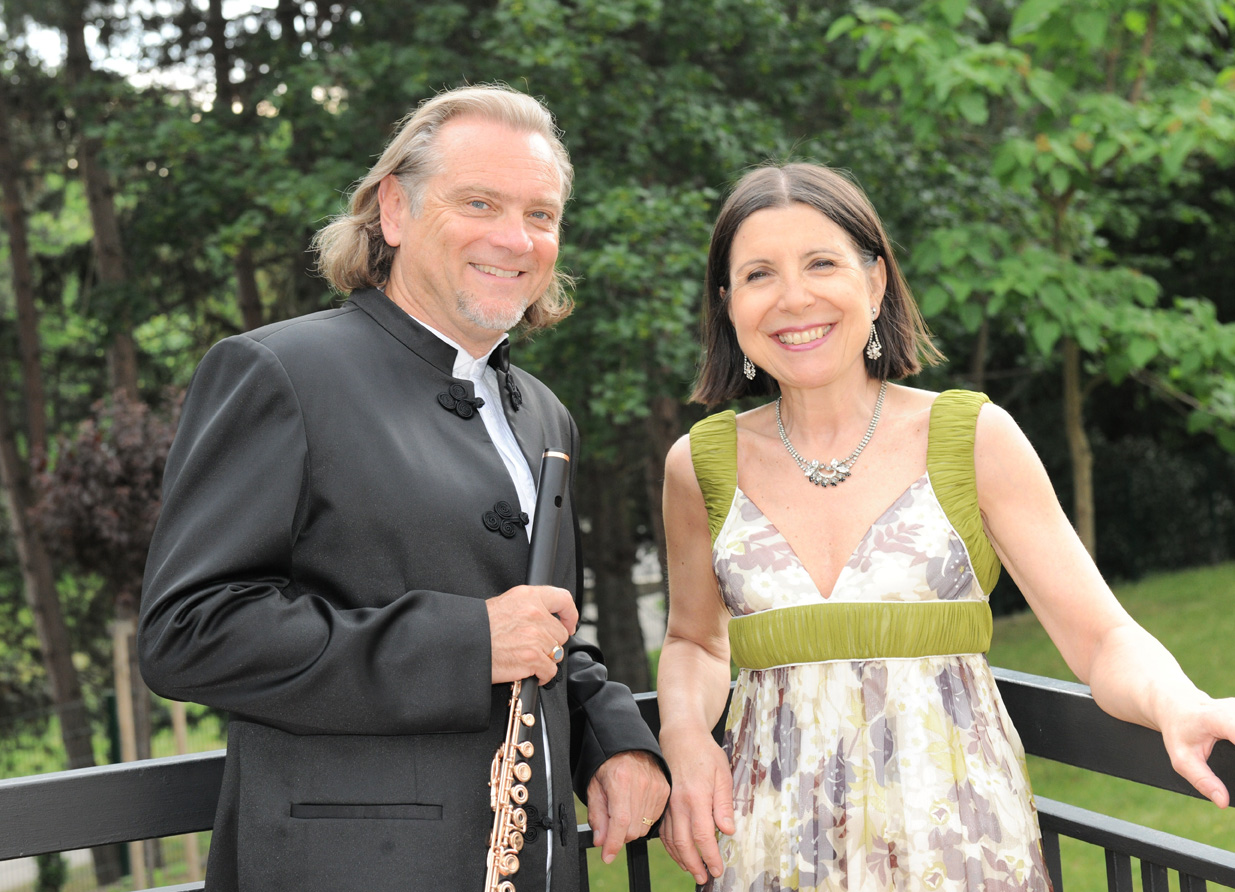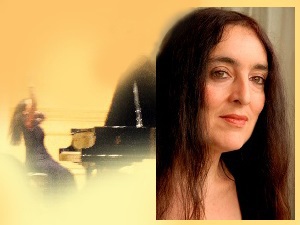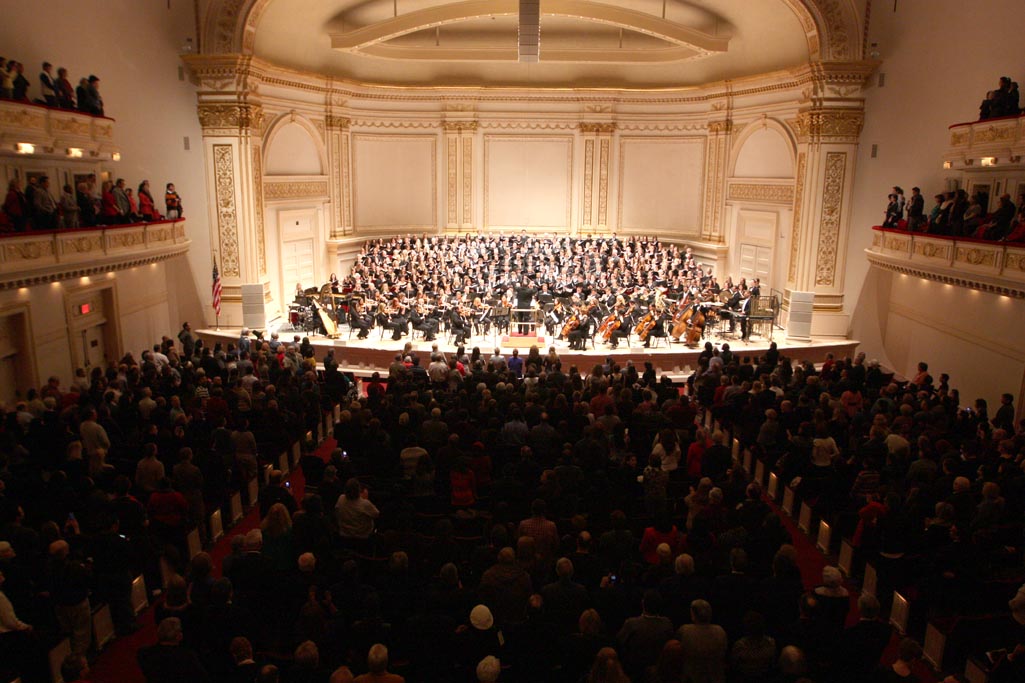Michigan State University Wind Symphony
Kevin L. Sedatole, conductor; Lindsay Kesselman, soprano
Stern Auditorium, Carnegie Hall; New York, NY
February 22, 2014
In a performance billed as “commemorating the 10th anniversary of the premiere performance of John Corigliano’s Symphony No. 3, Circus Maximus,” the Michigan State University Wind Symphony concluded their five-city tour at Stern Auditorium at Carnegie Hall. In addition to Circus Maximus, another Corligiano work, Mr. Tambourine Man: Seven Poems of Bob Dylan, and Traveler by David Maslanka were on the program. The combination of one of my favorite wind ensemble composers (Maslanka) with one of my favorite composers period (Corigliano) held the promise of being a very enjoyable concert.
This listener is a great fan of the wind ensemble, having cut his musical teeth, so to speak, playing some of the works of the great composers of “band” music (e.g. Clifton Williams, W. Francis McBeth). With this experience also come some very strong opinions and high expectations. What actually transpired far and away exceeded my original hopes.
Opening the concert was Traveler (2003) by Michigan State University alum David Maslanka (b. 1943). Written in honor of the retirement of Mr. Maslanka’s friend and colleague, Ray C. Lichtenwalter, Traveler is a musical rendering of a life journey. The energetic first section, as the composer states, is “depicting an engaged life in full stride.” The second and final section becomes quiet and meditative as the soul’s final preparation for the end of one journey and the beginning of the next. Mr. Maslanka has frequently alluded to his great admiration for J.S. Bach, so it is not altogether surprising that a Bach chorale, Nicht so traurig, nicht so sehr (Not so sad, not so much), BWV 384, is quoted in the opening of Traveler. The end of the journey need not be considered sad. Quoting Mr. Maslanka, “[In] our hearts, our minds, our souls- We travel from life to life to life- In time and eternity.”
Conductor Kevin L. Sedatole strode onto the stage and within seconds unleashed the dynamo that is his ensemble, setting the standard for the entire concert. Intonation was precise, and the playing was crisp and clearly articulated in the opening section’s rapid passages, which I have heard less skilled ensembles muddy up into an amorphous musical blob. The energetic percussionists dashed about as several players took on multiple roles. The final section was rendered with an otherworldly serenity that was simply breathtaking. As the music slowly faded away, disappearing into silence, the audience was spellbound.
Mr. Tambourine Man: Seven Poems of Bob Dylan (2000/2009) by John Corigliano (b.1938) followed. Scored for soprano soloist, and (in this arrangement) wind ensemble, the seven songs are Mr. Tambourine Man, Clothes Line, Blowin’ in the Wind, Masters of War, All Along the Watchtower, Chimes of Freedom, and Forever Young. The concept of taking lyrics of Bob Dylan’s songs and recasting them without any reference to the original musical material is a bold undertaking, even for a composer of the skill of Mr. Corigliano. The question of whether or not this “works” has a highly subjective answer. I would speculate that listeners who are very familiar with the original songs by Bob Dylan and the “hard-core” Dylan fans might experience more difficulties in “letting go”. To this listener, the settings were effective in the sense of capturing the power of the lyrics as if they had never had music associated with them. Soprano soloist Lindsay Kesselman made these songs her own in a performance filled with passion. Her diction was excellent and the colors of her voice really brought out the meanings of Dylan’s lyrics. There were countless moments of excellence, but I will mention just one that caught me off guard. The last line of Masters of War (‘Til I’m sure you’re dead) was delivered with a bone-chilling, angry hiss that I was not expecting from such a radiant voice! She was a joy to watch and hear, and when she finished Forever Young, the audience gave her a richly deserved and prolonged ovation. Mr. Corigliano came to the stage and shared his enthusiasm for the superlative performance the amazing Ms. Kesselman gave of his work.
After the intermission, it was time for the showstopper: Corigliano’s Symphony No. 3, Circus Maximus (2004). Scored for wind ensemble on-stage, off-stage players throughout the hall (in this case in each tier of the auditorium), including a small marching band, it is an approximately thirty-five minute work in eight sections that are played without pause. Those eight sections are entitled Introitus, Screen/Siren, Channel Surfing, Night Music I, Night Music II, Circus Maximus, Prayer, and Coda-Veritas. As Mr. Corigliano writes, “The parallels between the high decadence of Rome and our present time are obvious. Entertainment dominates our reality, and ever-more-extreme ‘reality shows’ dominate our entertainment.” Circus Maximus is a musical depiction of this decadence, and a shockingly effective one at that. It is at turns brash, monstrous and grotesque, ear-splittingly loud, but also filled with humor and moments of poignancy. It grabs the listener by the throat and holds him there for the entirety of the work.
I am quite familiar with this work, but this is the first time I have seen it staged live. The word staged is not a mistake, as this massive work is not something one just hears, but experiences in every sense of the word. Although there is an excellent recording of this work on the Naxos label conducted by Jerry Junkin (the commissioner and dedicatee of Circus Maximus) and the University of Texas Wind Ensemble, it simply cannot compare to a live performance. The infrequency of performances of this incredible work is regrettable, but understandable, given the ferocious difficulty of the music and the complexity of managing all the aleatoric elements with widespread forces. I must express my admiration for the work of conductor Kevin Sedatole, who was the ultimate ringmaster for this circus! (There is an excellent 2010 performance lead by Maestro Sedatole on video that one can view by clicking here.)
The playing of the Michigan State University Wind Symphony was outstanding from the opening calls of the Introitus to the last notes of the Coda. This was playing of a level that I would rate as being in the top five of all wind ensembles I have heard or played in (and there have been some heavy hitters on the list). I was transfixed in a way I can’t recall experiencing, and while the brilliance of the work was a factor, it is the players that make it all happen. It’s self-evident – it doesn’t matter how good the work is if the players are not good.
Highlights abound and I could go on and on, but I will limit myself to a few things I found to be particularly striking. Channel Surfing, with the constant stops, starts, and interruptions from all locations around the hall was really as if someone with a remote control were pushing buttons every few seconds in a sonic depiction of Attention Deficit Disorder. The use of soft mallets on the interior of the piano on the low A string in a continuous tremolo during Night Music I gave this section an eerie atmospheric aspect that was mesmerizing. The marching band wending its way down the aisles, onto the stage, past the conductor, and back up the aisles in the Circus Maximus section delighted all. I especially enjoyed the spectacle of this merry band passing directly by my seat. The Prayer section was hauntingly serene after the preceding chaos.
At the end of the Coda, a gunshot (yes, a gunshot!) ends the work. After the report of the gun, the stage went instantly to black, which was an inspired touch. The lights slowly came on to find Maestro Sedatole with his baton still suspended in midair as if he were frozen in time. The audience did not wish to wait for the customary lowering of the baton before exploding into an immediate standing ovation. One did not need to be a music reviewer to know they had just experienced something awe-inspiring. After a ten-minute standing ovation (in which Mr. Corigliano was called back to the stage multiple times), Maestro Sedatole led the ensemble in a rousing MSU Fight Song, to the delight of the many Michigan State University students, parents, and alumni in attendance.
There are concerts that one enjoys, but those memories often fade as time passes. There are others one remembers for negative reasons. The instances of concerts that years later still fill my memory with wonder are rare indeed. This is a concert that will remain as one of the highlights of my concert-going experiences. Congratulations to Maestro Sedatole and the superb Michigan State University Wind Symphony.
by Jeffrey Williams for New York Concert Review; New York, NY

